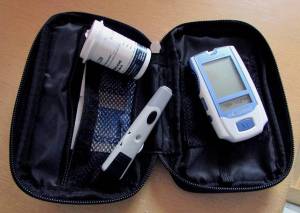Footcare for Diabetics and those with poor circulation
Diabetes is a condition where the body’s blood sugar levels are abnormally high. This is often a lifelong condition. The amount of sugar in a person’s blood is controlled by insulin created by the pancreas. The blood sugar will rise if:
1. The pancreas creates little or no insulin (Type 1)
2. The pancreas creates insulin but it is inadequate and therefore ineffective to the body’s requirements
(Type 2)
How does Diabetes affect your feet?
Feet are one of the most vulnerable parts of the body, yet most people tend to neglect them. For the majority, this is not too serious but for the diabetic it can have dire consequences.
People with diabetes have reduced blood circulation to their feet and those who have had diabetes for a long time may have damage to the nerve and blood supply of their feet. Poor circulation also often accompanies age. The symptoms of nerve damage include numbness, (medically referred to as peripheral neuropathy) loss of feeling, tingling, burning sensations or pain. Those of impaired blood supply include pain at rest, especially at night; pain in the calf whilst walking, and feet that feel cold to the touch.
Every year thousands of people have toes, feet and even legs, amputated because of diabetes related foot problems. Most of these could have been prevented by proper foot care.
Footcare advice
As well as maintain healthy feet as outlined in our simple guide, diabetics should follow these guidelines:
1. Never walk barefoot as this may lead to cuts and damage to the skin.
2. Never sit cross legged as this will further reduce circulation to your feet
3. Always ensure you wear suitable, well fitted footwear. Shoes which do not fit can cause corns and
callouses and increase your risk of infection.
4. Keep your toenails well maintained, cutting and filing regularly.
5. DO NOT SMOKE! This will further reduce blood circulation.
6. Consult a podiatrist if you notice any breaks, sores, swelling or redness to the skin.
7. ALWAYS seek professional treatment. DO NOT attempt to home treat.
You’re more at risk of developing problems in your feet when you have diabetes. This is because high blood sugars can damage your blood vessels, affecting how blood flows to your legs and feet.
If these problems don’t get treated in time, they can develop into serious complications very quickly – complications that could lead to amputation.
You can stop foot problems getting worse by knowing the signs to look out for. You’re looking for:
- a tingling sensation or pins and needles (like numbness)
- pain (burning)
- a dull ache
- shiny, smooth skin on your feet
- hair loss on your legs and feet
- loss of feeling in your feet or legs
- swollen feet
- your feet don’t sweat
- wounds or sores that don’t heal
- cramp in your calves when resting or walking
- changes in the colour and shape of your feet
- cold or hot feet
- blisters and cuts that you can see but don’t feel
- a foul smell coming from an open wound on your feet.

